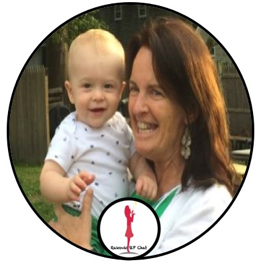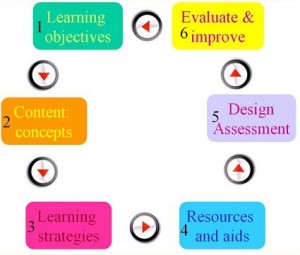Some of you are doing an excellent job with your lesson plans. I am putting some of the sections here so that you can see some great examples.
Grace constructed this for part of her lesson for a young girl with an articulation disorder.
Notice:
- baseline simply stated with just the part being worked on
- Excellent SMART goal
- Materials stated
- You will notice that Grace puts in the time in her procedure. Some of you might find this helpful.
- What she is going to say to the student is clearly written. This is helpful as when you spend the time to look up and construct what you are going to say it is helpful to record it on your plan.
- You will also see that Grace put her personal goal in parenthesis so that she is also keeping track of this.
- Grace’s data chart is clear and directly related to the goal.
- Notice that although this is a lesson plan she has past performance on the data section. This allows her to quickly see if her client is getting better or worse
| Baseline level of performance: 22% accuracy for OR initial, indicating that this should be the first target of treatment | ||||||||||||||||||||||||||||||||||||||||||||||||||||||||||||||||||||||||||||||||||||||||||||||||||||||||||||||||||||||||||||||||||
| Goal: By the end of the semester,Child will increase her overall speech intelligibility as evidenced by her ability to produce words with OR in initial position at the word level and to self-monitor her progress with 80% production accuracy. | ||||||||||||||||||||||||||||||||||||||||||||||||||||||||||||||||||||||||||||||||||||||||||||||||||||||||||||||||||||||||||||||||||
| Materials: R production visual, self-monitoring cups/marbles and Crazy Eight cards with targets | ||||||||||||||||||||||||||||||||||||||||||||||||||||||||||||||||||||||||||||||||||||||||||||||||||||||||||||||||||||||||||||||||||
|
Procedure: (20 minutes) Child will practice production of OR initial by reviewing production of R: · Tongue back · Tongue bunched · Tongue tense · Lips do not move · Jaw does not move · Jaw stays relaxed · Jaw slightly open Child and the clinician will use the mirror to compare how their tongues move while producing /r/ using dental flossers to put tongue in correct position.
Use Jumbo Mighty Mouth to demonstrate tongue placement. (Personal goal – 1/10 new materials from URI clinic).
After each of CHILD’s productions, the clinician will judge her production accuracy by putting a marble in one of 3 cups, labeled: “Bull’s Eye,” “Almost,” and “Not Quite.” CHILD will be encouraged to ask questions and to practice judging her accuracy before clinician feedback. CHILD and the clinician will play Crazy Eights with labeled cards to target these productions.
|
Data:
Observations/Behavior:
|
|||||||||||||||||||||||||||||||||||||||||||||||||||||||||||||||||||||||||||||||||||||||||||||||||||||||||||||||||||||||||||||||||
Kristen wrote this for a student with social communication difficulties:
Some great things:
- Use of a popular movie to connect with student
- Excellent teaching of the concept that she is teaching. This is what we are doing that would be different than another person that might be presenting the material.
- Data sheet simple and informative
| Baseline Level of Performance: Child can identify non-verbal social communication behaviors in structured activities with 60% accuracy. | |||||||||||||||||||||||||
| Goal: By the end of the semester, Child will improve his social communication skills as evidenced by identifying non-verbal social communication behaviors in structured activities with 80% accuracy. | |||||||||||||||||||||||||
| Materials: “Inside Out” character visual chart, facial visuals, question worksheet with answer options | |||||||||||||||||||||||||
|
Procedure: · The clinician will explain that every person can feel a variety of emotions in a day and that it is important to understand other people’s current emotions so we know how to interact with them · The clinician will explain that we can “figure out” (infer) other’s emotions based on many clues including their face (facial expression) and body movement (body language) · The clinician will present visuals of the characters from the movie “Inside Out” as examples · The clinician will then present CHILD with examples of emotions using human visuals and provide answers for 1-2 examples using the worksheet · CHILD will work on the remaining emotions using visual clues and provide answers on his worksheet |
Data:
*all visuals required:
Observations/Behaviors:
|
||||||||||||||||||||||||
Here is another great procedural section: Ashley wrote this one. This is a teenager who is a little reluctant about treatment. Notice that there are some behavioral strategies built into the lesson plan and there are several strategies in place for proper articulation.
| Baseline level of performance At the beginning of the semester, Student was able to produce 25% of /l/ sounds at word level in isolation. | ||||||||||||||||||||||||||||||||||||||||||||||||||||
| Goal: By the end of the semester, STUDENT will improve intelligibility by increasing the accuracy with which she produces /l/ in the initial position of words to 75% following a verbal/visual model during drill tasks. | ||||||||||||||||||||||||||||||||||||||||||||||||||||
| Materials: token tower (if needed), /l/ worksheet, timer, /l/ initial bingo, dice, dry erase board, tokens | ||||||||||||||||||||||||||||||||||||||||||||||||||||
|
Procedure: 1. The clinician will set a timer for 5 minutes so Student knows that the activity has an endpoint. 2. The clinician will have JP produce /l/ in isolation, using dum dum lollipops to show where the tongue should be placed during production. 3. The clinician will have JP produce / l/ in syllables: / lei/, / li/, /lai/, / lo/, / lu/ three times each with the use of a token tower. 4. The clinician will point out the syllable that JP produces best so that she can hear it. The clinician will also point out which syllable is most difficult. 5. The clinician will present the /l/ bingo game, the worksheet, and the artic chipper chat and have JP choose the activity. 6. The clinician will elicit production of 10 /l/ initial words. 7. The clinician will make sure to state “I know this is hard” as well as other positive feedback. 8. The clinician will send information home with notes on what words were produced successfully and those that were most difficult, for practice. Elicitation techniques: – Use the singing sound (la la) from a lullaby – Contrast lip posturing for /w/ and /l/. For /w/, show/explain that lips are rounded and protruded; but for /l/, lips are separated and somewhat relaxed. – Procedure: make a flat tongue and then raise the tip of the flattened tongue to the spot behind the upper front teeth. Remind JP that there is no lip ronding. – Shaping from /a/: prolong /a/, interrupt production by raising tongue tip to alveolar ridge (/a/, /la/, /a/, /l/ OR whisper /a/ and place tongue tip on alveolar ridge, then tell JP to say /a/ very loudly and release her tongue. |
Data:
Observations/Behaviors:
|
|||||||||||||||||||||||||||||||||||||||||||||||||||



Great examples, these are very helpful. I’m going to try to include personal goals in my therapy plans from now on. I will also try to make my procedure a bit more specific and detailed, read!
Excellent!